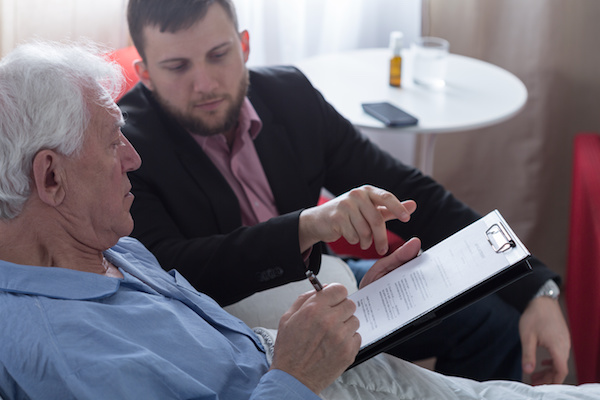
TUESDAY, March 25, 2014 (HealthDay News) — The vast majority of patients with skin cancer or moles who self-medicate with alternative “treatments” they find online are courting danger, new research contends.
The finding is based on an analysis of past cases in which patients sought out unsupervised do-it-yourself cures via the Internet.
Patients who turned to certain salves often ended up with scarring or extensive tissue damage, researchers found. And for those with skin cancer, these unproven treatments led to worse results in terms of cancer recurrence or cure than routinely seen in standard medical practice, the study authors said.
“Now there is evidence that some of the treatment products found online may be helpful if used purposefully, safely and in the right way,” said study co-author Dr. Adam Friedman, director of dermatologic research at Montefiore-Einstein College of Medicine, in New York City.
“But when people find these treatments over the Internet and don’t know what they’re getting or what they’re doing, it can be very dangerous,” Friedman said. “Just because a product is labeled natural or organic doesn’t mean it’s safe to use.”
“Medicine is not about throwing a dart at a dartboard and hoping for the best,” he said. “Because while you may end up treating a cancer, you may also end up burning a hole through your face.”
Friedman, who’s also an assistant professor of medicine, physiology and biophysics, and his Montefiore colleague Brandon Adler presented their findings at the American Academy of Dermatology’s annual meeting in Denver that concluded Tuesday.
Because this study was presented at a medical meeting, the conclusions should be viewed as preliminary until published in a peer-reviewed journal.
To explain the rapid rise of the Internet as a go-to source for self-help medical information, the study authors pointed to data suggesting the percentage of American adults who search the Web for health-related topics rose from between 40 percent and 50 percent at the turn of the century to 72 percent by 2012.
Among those who do so, more than 40 percent specifically home in on sites that discuss complementary and alternative medicine, with considerable attention devoted to mole removal and skin cancer concerns, the study authors said.
The problem? Alternative-medicine sources found online often promote questionable but commercially available treatments, such as black salves that contain potentially caustic or inflammatory ingredients like bloodroot and zinc chloride. If used inappropriately and without supervision, such products raise the risk that patients can develop significant pain and scarring, the researchers said.
To gain insight into the degree of risk, Friedman and Adler reviewed the findings of 26 self-treatment studies compiled between 2001 and 2012. Some of the studies involved a single patient, while others focused on a series of cases, with men accounting for nearly 77 percent of patients.
Half the patients had basal cell carcinoma skin cancer, while about 27 percent had sought a remedy to tackle moles. In all cases, patients had attempted treatment by self-administering agents containing bloodroot or zinc chloride, the researchers said.
The researchers said such treatments provided poor cosmetic results in nearly 89 percent of cases. What’s more, mild to moderate scarring occurred among almost 57 percent of the patients, with the other 43 percent — mostly skin cancer patients — experiencing major tissue damage, the researchers said.
Although 71 percent of patients experienced some temporary resolution of their initial problem, more than 56 percent of patients with skin cancer still had cancer following treatment or saw their disease reappear, the researchers said.
In the end, only about 39 percent of those with basal cell carcinoma were fully cured by self-treatment. That figure pales in comparison to the nearly 95 percent cure rate seen when patients are treated with standard medical practice and guidance, the researchers said.
“The overarching message here is that, in the majority of cases, the end result was not favorable,” Friedman said. “Neither in terms of cosmetic outcome nor in terms of curing disease.”
Ashani Weeraratna, an assistant professor in the molecular and cellular oncogenesis program at the Wistar Institute in Philadelphia, said it’s important that patients understand none of these sorts of self-help treatments are regulated by the U.S. Food and Drug Administration.
“In this age of Internet medicine and access to all sorts of unregulated medications, it is critical that patients realize that these medications are not only not curative, but are actually harmful,” said Weeraratna, who was not involved in the new research. “This is not only directly [through] tissue damage, but indirectly by not allowing for diagnosing, staging and the assurance of complete removal [of the cancer] by a trained team of dermatologists and pathologists.
“It is unimaginable that someone with a basal cell carcinoma, for example, would use a cream they bought from the Internet that could give them extensive tissue damage, and a chance of only a 38 percent cure,” Weeraratna added. “[Particularly] when current standard of care for basal cell carcinoma involves completely safe, quick outpatient surgery, with no side effects, and a 95 percent cure rate.”
More information
For more about skin cancer and treatment, visit the U.S. National Cancer Institute.
Copyright © 2025 HealthDay. All rights reserved.

